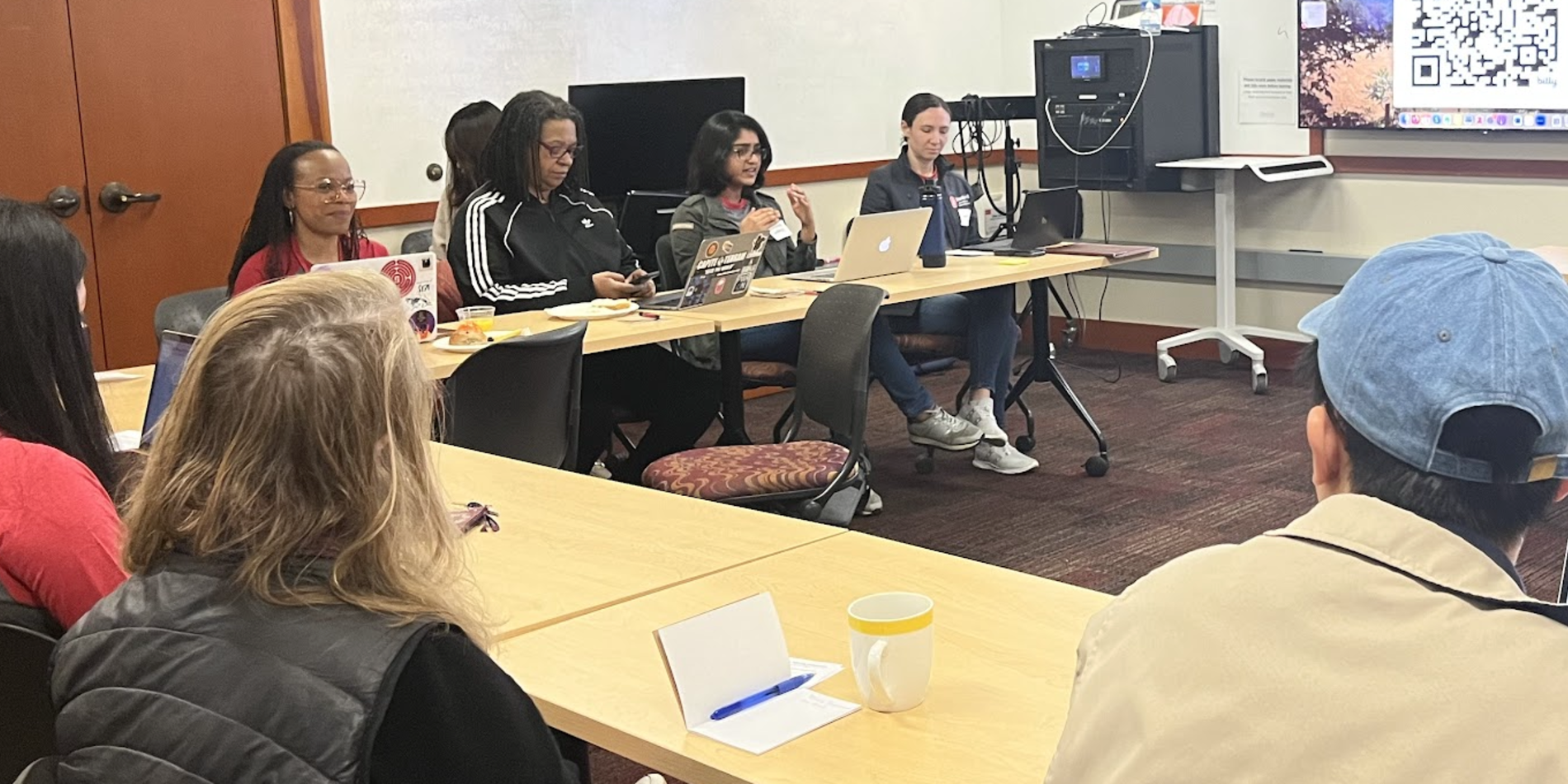Teaching DataViz: An Interview with Cassie Wright
The PWR Newsletter staff had the pleasure of interviewing Dr. Cassie Wright about her new, very popular PWR 91 course, "Seeing is Believing," which she taught for the first time in winter quarter.
PWR Newsletter: Tell us about your course and what conversations were most rewarding for students?
Cassie: Seeing is Believing is a course that approaches data visualization as a specific genre of visual communication that emphasizes empirical storytelling. The project-based course asks students to engage in applied practice of dataviz, reading major theorists and putting theory into practice with an iterative series of weekly mini-group projects and workshops. Each class was organized around a "best practice" lesson: encoding; integrity; excellence; exploration, decluttering, etc. The hear of the course emphasized data visualization as supporting two main analytic practices: exploration and storytelling. I wanted to help students see the inherently rhetorical nature of data viz, and to think through data viz as an inventive praxis, as an invitation to literally re-see the texts, peoples, and places we theorize, and in the process, invite people to re-see our world through the composition of rhetorically curated visualizations of data that tell persuasive empirical stories.
PWR Newsletter: What kind of projects did students do?
Cassie: The assignment arc moved students from reception to production, inviting students to analyze various data visualization genres based on theories of graphical excellence and integrity, for example; mid quarter the class pivots to application, inviting students to design original data visualizations extant data sets and compare notes on their design approach through weekly intensive usability workshops. Students also used theory to redesign a "bad" data professional visualization as well as a former graphic or chart they have previously submitted for another course at Stanford in order to understand direct transferable takeaways of their process to other coursework.
One of the more interesting projects we did was design original data story to feature as the title image of a New York Times feature on gun violence. Students worked in-class in small groups, integrating principles from that week's lesson (graphical integrity vs memorability, multiple graphical elements (MGEs), and encoding) to an extant data set. Working with the same data set allows students to see "multiple truths" emerging from a given set of empirical numbers by way of design and author's perspective, thus underscoring a main takeaway of the course: that "data is a premise rather than a given" from which multiple "truths" can be argued.
Students produced a dashboard for their final visualization and wrote an extended reflection of their process, including screen shots of the use of exploratory visualizations that supported inference and refinement of analysis. The projects were interesting, substantive, and asked students to put into practice and test a term's worth of theory.
PWR Newsletter: How do you imagine future iterations of this course?
Cassie: One area where we ran out of time was data scraping, wrangling, and structuring. students chose to work with smaller data sets than originally imagined, and, in truth, the prerequisite coding skills required of working with big data remains a barrier to access; so, instead of defining "how big" data had to be, I allowed students to gravitate toward extant data sets that were of topical interest. This emergent approach worked ok, but I think carving time and space for more immersive approaches to data wrangling and structuring would be a great way to further emphasize the "constructed" aspect of data visualization and the rhetorically subjective nature of data analysis.



